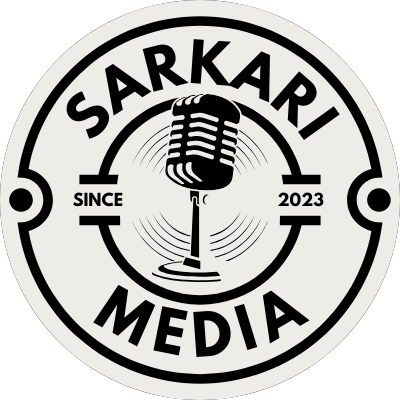56978 TCS Answers course aims to introduce participants to the basic concepts, principles and frameworks of Agile project management.
The TCS National Qualifier Test (NQT) is one of the key selection processes for recruitment as a software engineer at TCS. To get shortlisted, it is crucial for candidates to not just understand the syllabus but also know how to present 56978 TCS Answers optimally in the exam. This article provides comprehensive solutions and formats for answering the 56978 TCS Answers different question types in the TCS NQT.
56978 TCS Answers : Agile E1
Section 1: Introduction to Agile
Question 1
Which of the following is NOT a value of the Agile Manifesto?
Answer: Responding to change over following a plan
The four values of the Agile Manifesto are:
- Individuals and interactions over processes and tools
- Working software over comprehensive documentation
- Customer collaboration over contract negotiation
- Responding to change over following a plan
TCS Course Answers all :
TCS RIO : Remote Internship
56978 TCS Answers : Agile E1
43893 TCS Answers : Information Security Awareness
7408 TCS Answers : iSecurity quiz
21939 TCS Answers : TCS Code of Conduct
64091 TCS Answers : Mastering TCS Data Privacy
55220 TCS Answers : Navigating Success GDPR
62297 TCS Answers : TCS SBWS Mode Assessment
2735 TCS Answers : Sexual Harassment Success
Question 2
Which of the following best describes the Agile Manifesto?
Answer: The Agile Manifesto is a declaration of values and principles that guide Agile software development. It favors individuals and interactions, working software, customer collaboration, and responding to change over processes and tools, comprehensive documentation, contract negotiation, and following a plan.
Section 2: Agile Principles
Question 1
Which principle states that working software is delivered frequently from a couple of weeks to a couple of months, with a preference to the shorter timescale?
Answer: Deliver working software frequently, from a couple of weeks to a couple of months, with a preference to the shorter timescale.
The 12 principles of the Agile Manifesto are:
- Our highest priority is to satisfy the customer through early and continuous delivery of valuable software.
- Welcome changing requirements, even late in development. Agile processes harness change for the customer’s competitive advantage.
- Deliver working software frequently, from a couple of weeks to a couple of months, with a preference to the shorter timescale.
- Business people and developers must work together daily throughout the project.
- Build projects around motivated individuals. Give them the environment and support they need, and trust them to get the job done.
- The most efficient and effective method of conveying information to and within a development team is face-to-face conversation.
- Working software is the primary measure of progress.
- Agile processes promote sustainable development. The sponsors, developers, and users should be able to maintain a constant pace indefinitely.
- Continuous attention to technical excellence and good design enhances agility.
- Simplicity–the art of maximizing the amount of work not done–is essential.
- The best architectures, requirements, and designs emerge from self-organizing teams.
- At regular intervals, the team reflects on how to become more effective, then tunes and adjusts its behavior accordingly.
Question 2
Which principle states that business people and developers must work together daily throughout the project?
Answer: Business people and developers must work together daily throughout the project.
Section 3: Agile Methodologies
Question 1
Which of the following is NOT an Agile methodology?
Answer: Waterfall
The common Agile methodologies are:
- Scrum
- Kanban
- Extreme Programming (XP)
- Crystal
- Dynamic Systems Development Method (DSDM)
- Lean Software Development
Waterfall is a traditional/sequential methodology and not considered an Agile methodology.
Question 2
Which Agile methodology uses story cards/Kanban boards and focuses on limiting WIP?
Answer: Kanban
Kanban uses visual boards (physical or electronic) to display workflow with columns for different stages of work. It focuses on limiting Work In Progress (WIP) to improve flow.
Section 4: Scrum Framework
Question 1
Which role is responsible for removing impediments and ensuring the team has what it needs?
Answer: Scrum Master
The Scrum Master is responsible for removing impediments faced by the team, facilitating the Scrum process, and ensuring that the team has what it needs to be productive.
The three roles in Scrum are:
- Product Owner
- Scrum Master
- Development Team
Question 2
In Scrum, what is the maximum duration of a Sprint?
Answer: 4 weeks
The timeboxed iterations in Scrum are called Sprints. The maximum recommended duration for a Sprint is 4 weeks.
The course aims to introduce participants to the basic concepts, principles and frameworks of Agile project management. Some key topics covered include:
- History and drivers for Agile adoption
- The Agile Manifesto and 12 principles
- Common Agile methodologies like Scrum, Kanban, XP etc. and comparing their suitability for different project types
- Event-driven nature of Agile with iterations/sprints, daily stand-ups, retrospectives etc.
- Cross-functional, self-organizing Agile teams
- Defining and managing product backlogs, release planning and tracking progress
- Agile estimation techniques like planning poker and story points
- Resolving impediments, continuous improvement through retrospectives
- Leadership and culture change challenges for transitioning to Agile
- Scaling Agile frameworks like SAFe, LeSS etc. for large, distributed teams
- Integrating Agile with other frameworks like DevOps, Lean, Design Thinking
- Metrics and KPIs for measuring Agile adoption and benefits.
